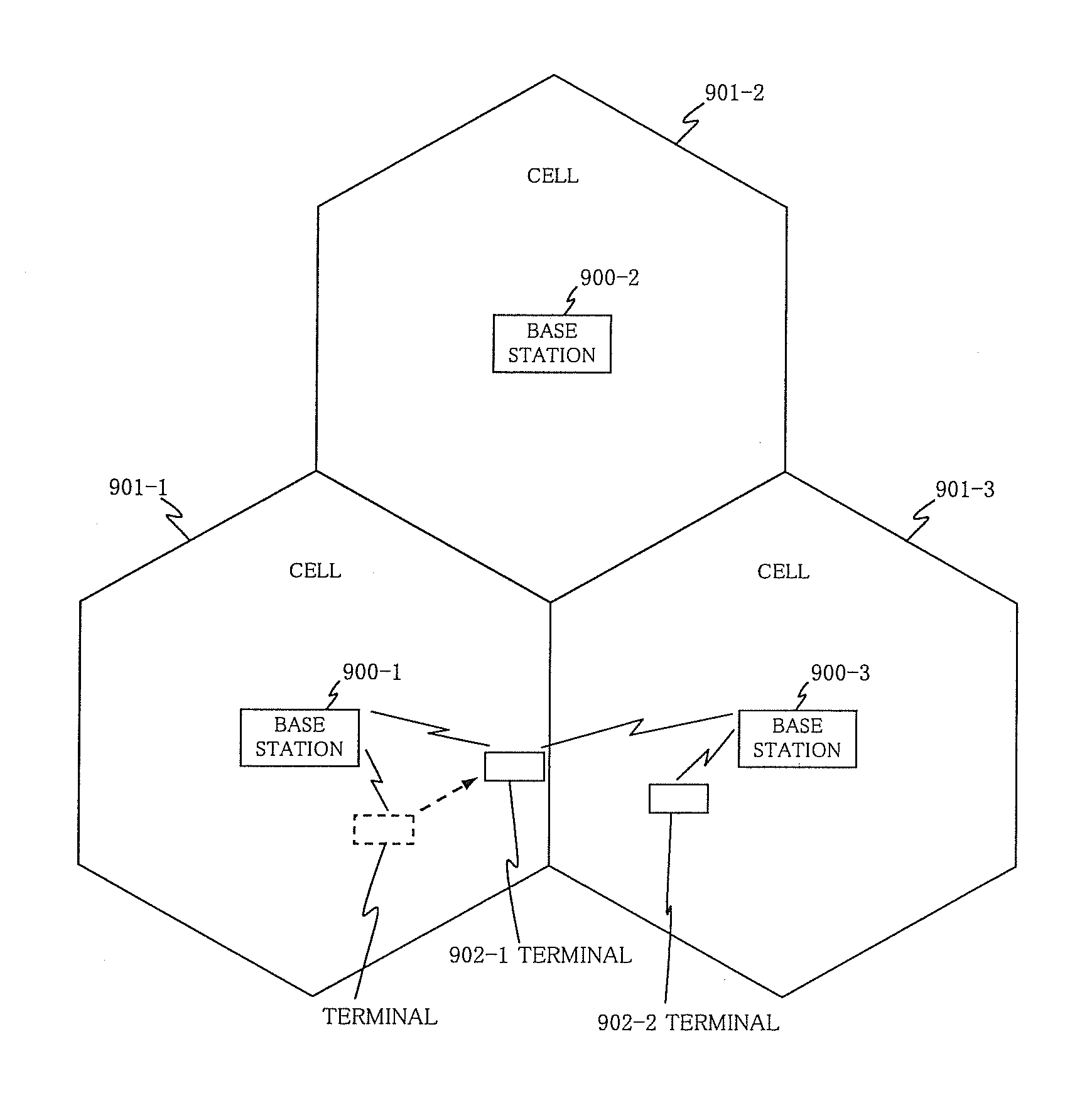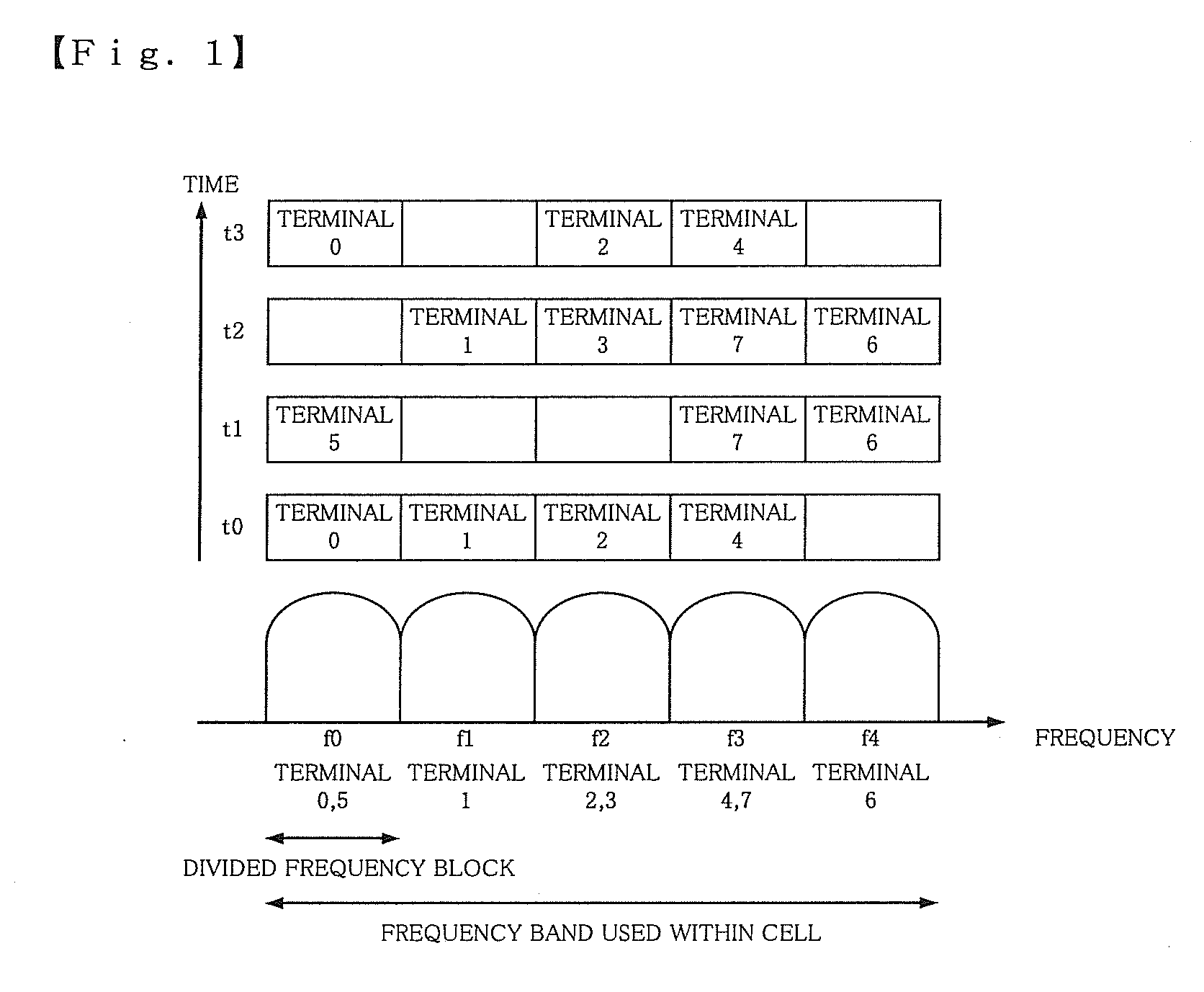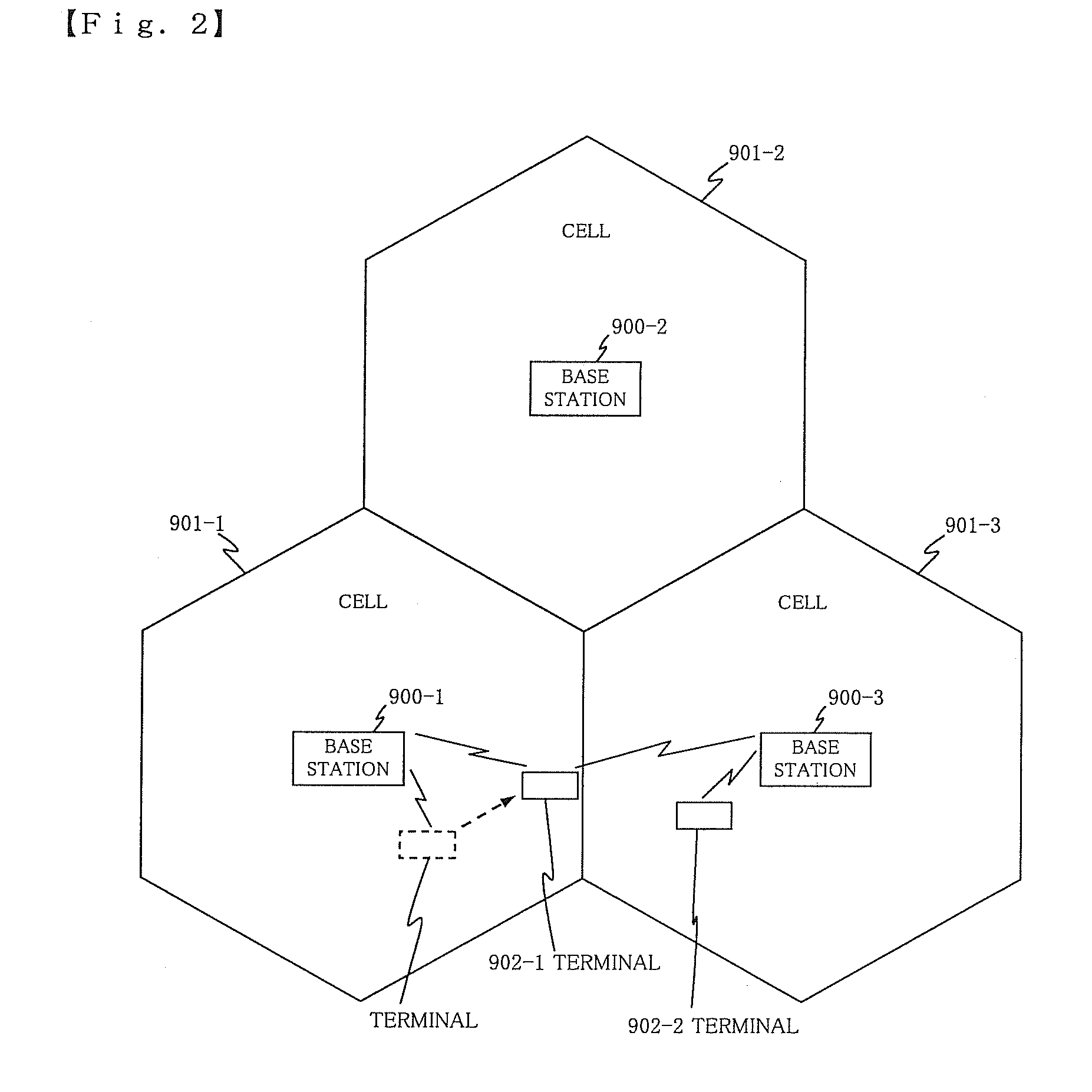Mobile communication system, base station, and inter-cell interference reduction method
a technology of inter-cell interference and mobile communication system, which is applied in the direction of transmission, wireless communication, electrical equipment, etc., can solve the problems of reducing frequency utilization efficiency and restricting transmission power from a terminal, so as to reduce inter-cell interference, reduce interference between adjacent cells, and reduce frequency efficiency
- Summary
- Abstract
- Description
- Claims
- Application Information
AI Technical Summary
Benefits of technology
Problems solved by technology
Method used
Image
Examples
Embodiment Construction
[0060]Hereinafter, exemplary embodiments of the present invention will be described with reference to the drawings.
[0061]FIG. 4 is diagram which shows one exemplary embodiment of the mobile communication system of the present invention.
[0062]As shown in FIG. 4, the exemplary embodiment is composed of base stations 100-1 to 100-3 and terminals 102-1 to 102-2. Then, areas where communication is allowed between terminals 102-1 to 102-2 and base stations 100-1 to 100-3 are each defined in cells 101-1 to 101-3. Terminal 102-1 moves within cell 101-1 toward cell 101-3. Although the number of base stations 100-1 to 100-3 is three in this configuration, as will be described, the number thereof is not limited to three for carrying out the present invention. Although the number of terminals 102-1 to 102-2 is two in this configuration, as will be described, the number thereof is not limited to two for carrying out the present invention.
[0063]FIG. 5 is one configuration example of base station ...
PUM
 Login to View More
Login to View More Abstract
Description
Claims
Application Information
 Login to View More
Login to View More - R&D
- Intellectual Property
- Life Sciences
- Materials
- Tech Scout
- Unparalleled Data Quality
- Higher Quality Content
- 60% Fewer Hallucinations
Browse by: Latest US Patents, China's latest patents, Technical Efficacy Thesaurus, Application Domain, Technology Topic, Popular Technical Reports.
© 2025 PatSnap. All rights reserved.Legal|Privacy policy|Modern Slavery Act Transparency Statement|Sitemap|About US| Contact US: help@patsnap.com



